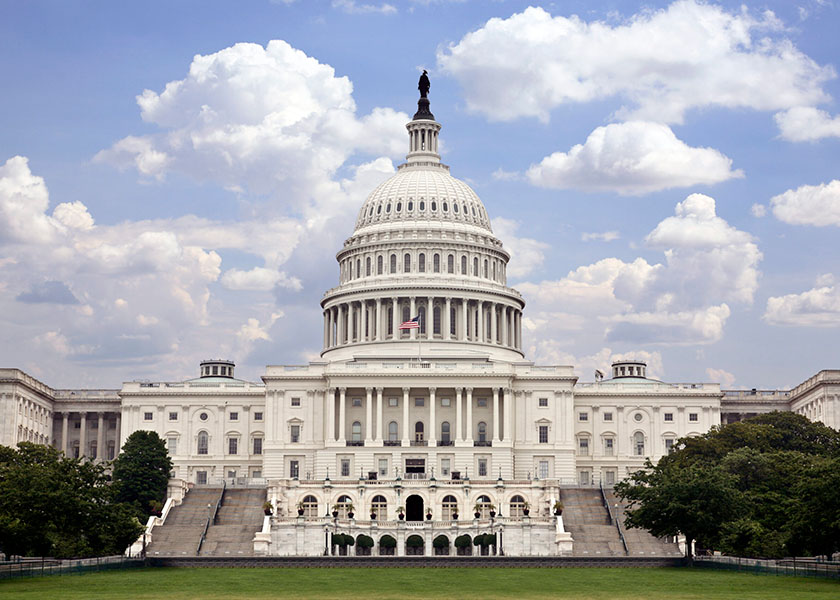By Ryan Detrick, Chief Market Strategist, Carson Group
“I don’t make jokes. I just watch the government and report the facts.” -Will Rogers
As you’ve probably heard by now, the government is on the brink of shutting down unless Congress connects on a Hail Mary to pass a dozen spending bills before the September 30 funding deadline. The odds are this won’t happen and on October 1 the government will be at least partially shutdown.
What exactly does this mean for you, as investors? The good news is stocks tend to take shutdowns in stride, as we will discuss soon. Here are ten things to know about a potential government shutdown.
The bottom line is the government can only spend on what is deemed essential services, like law enforcement and safety. The largest impact will be on hundreds of thousands of federal employees not receiving their regular paychecks. It will take a bipartisan deal to avoid a shutdown or to reopen it.
Should we have a full government shutdown (the last time was in 2013), then all 1.9 million federal employees who don’t work on mandatory programs (like Medicare and Social Security) will be furloughed and sent home, not getting a check until things open back up. Essential employees will be forced to come to work (think TSA and air traffic controllers), but they also won’t be paid until things are back up and running.
Active military pay will also be delayed, but veteran benefits will continue. The good news is once Washington gets going again, it is required by law to repay all federal workers and military. With the upcoming election getting closer, it is hard to think anyone wants to have military members not getting paid, as those headlines won’t be well received.
Food stamps and other nutritional aid programs (think school lunches) will continue unaffected, while disaster relief will continue as well, but there is only so much saved in the Disaster Relief Fund, so an extended shutdown could lead to emergency funding. The post office continues (meaning you can still go stand in a long line if you like), as does Social Security and Medicare. The Internal Revenue Service (IRS) will continue to operate as normal and no workers there will be furloughed.
Some government economic data will be delayed, so things like the monthly jobs data won’t happen. We saw delayed government data in the last shutdown in 2018/19. Given the Federal Reserve Bank (Fed) is data-dependent, this could cause more headaches the longer a shutdown goes.
National parks or museums (think the Smithsonian) will also be shutdown. It was estimated that the full shutdown in 2013 lead to a loss of $500 million in spending at national parks according to the National Park Services. The 2019 shutdown saw delays at airports, as traffic controllers weren’t crazy about showing up to work and not get paid. Lastly, good luck getting a passport quickly. I got a new one last year and it took forever when the government was actually open, so it’ll take even longer now.
Libby Cantrill, head of U.S. public policy at PIMCO, estimates the impact on GDP to be 0.1% to 0.2% each week, but believes that will be quickly reversed once government employees get paid. The 2013 shutdown was the last time we had a full government shutdown and it lasted only 16 days, but shaved 0.6% off GDP. The worry, of course, is this shutdown could also turn into a full shutdown and lasts longer than the 2013 shutdown. Libby thinks that a full shutdown is more likely than a partial shutdown at this point.
Since 1976, we found 22 funding gaps, with only four times the government was fully shutdown, including 2013. The previous shutdown in 2018/19 was a partial shutdown which lasted 35 days (meaning some spending bills were passed). Speaking of 2013, it was both the last full shutdown, and the longest full government shutdown ever at 17 days, while the last shutdown was a partial shutdown and it lasted a record 35 days.
As you can see below, most shutdowns didn’t last very long (median of 5 days) and fortunately stocks weren’t overly impacted either, with an average return of 0.3% during the shutdown. Historically, the market has looked past the scary headlines in these situations and tended to look forward. Also, don’t forget the previous shutdown was a record 35 days, yet stocks gained more than 10% during that shutdown. Yes, this was mainly due to Jerome Powell and the Federal Reserve Bank (Fed) turning dovish in late 2018, but it still showed that shutdowns don’t have to be bearish.
Take one more look at the table above, as stocks were up 12.7% on average a year after the shutdown ended, reminding investors that stocks tend to go higher over time and we believe that once this shutdown is resolved will likely see better times as well.
For more on the latest on shutdowns, strikes, and student loans, be sure to watch our new Facts vs Feelings Take Five video with VP, Global Macro Strategist Sonu Varghese and myself.
Ryan is a non-registered affiliate of Cetera Advisor Networks, LLC.
The views stated are not necessarily the opinion of any other named entity. Due to volatility within the markets mentioned, opinions are subject to change without notice. Information is based on sources believed to be reliable; however, their accuracy or completeness cannot be guaranteed. Past performance does not guarantee future results.



